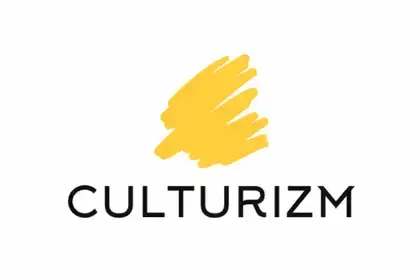The concept of “opposite of contemporary” is an intriguing one, as it can refer to various aspects such as time, style, or even mindset. While contemporary generally signifies something existing or occurring at the same time, incorporating the latest methods, concepts, or styles, the antithesis of this term spans a multitude of meanings. In this article, we will explore the nuances of the opposite of contemporary and how it manifests in different contexts.
Opposite of Contemporary

Understanding the opposite of contemporary in terms of time, we can look at historical or antiquated as the antonyms. These words describe something that belongs to an earlier period or is no longer in use, essentially being a direct contrast to the present-focused contemporary term. Moreover, the inverse of contemporary in terms of style or mindset can reflect traditional or conservative approaches, moving away from the cutting-edge nature of the contemporary sphere.
However, it is essential to note that the opposite of contemporary can vary depending on the context of discussion. By examining various examples and scenarios, we can gain a more comprehensive understanding of this concept and its implications across a range of subjects.
Defining the Contemporary
Concepts of Time and Age
Contemporary refers to something that exists or is happening during the same time as the present. In other words, it means that something is current, modern, and up-to-date. The term can be applied to various areas, such as art, design, fashion, and technology, to describe items or ideas that are at the forefront of their respective fields. To further understand the concept of contemporary, let’s take a look at the following examples:
- Modern: Contemporary art refers to the art that is being created right now. Some characteristics might include bold colors and innovative techniques.
- Current: Celebrities wearing the latest fashion trends can be referred to as dressing in a contemporary style.
- Up-to-date: Staying informed about the most recent news and events is to be up-to-the-minute or contemporary in terms of knowledge.
Significance in Literature and Art
The significance of contemporary in literature and art lies in its ability to capture the essence of a specific time period, whether it is through subject matter, style, or both. This allows artists and writers to reflect the society and culture they live in by creating works that represent these prevailing ideas and values. Some examples in the arts include:
- Contemporary art: This genre often experiments with new materials, technologies, and techniques that break away from traditional art forms.
- Present-day literature: Works of fiction and nonfiction that address current issues or topics can be considered contemporary literature.
- State-of-the-art: This term refers to technology or design elements that are at the cutting edge of their fields, such as the latest smartphone model or architectural style.
In summary, contemporary is a term that represents things or ideas that are happening now, depicting the latest or most up-to-date concepts and styles. In literature and art, contemporary works often showcase the values and concerns of the time in which they are created, offering insights into the nuances of the modern world.
Exploring Antiquity and Tradition

When discussing the opposite of contemporary, we delve into the realms of the antiquated, traditional, and ancient. This section highlights the significance of understanding the roots and cultural aspects that predate modern times.
Historical Eras and Their Relevance
Historical eras, such as the prehistoric, antediluvian, and past, provide a wealth of information about the development of human society. They offer insights into various customs, beliefs, and practices that have been either preserved or transformed over time. Examining historical eras allows us to recognize the differences between old-fashioned or outdated concepts and more modern ideologies. A brief overview of some key historical eras includes:
- Old World: ancient civilizations like Egypt, Greece, and Rome
- Vintage: the Renaissance period with a focus on fine arts and literature
- Classic: the Enlightenment era, marked by intellectual and scientific development
- Bygone: the Victorian and Edwardian times, where technological advancements took place
Cultural and Artistic Value of the Past
The past holds immense cultural and artistic value, often manifesting in archaic artifacts, old-time traditions, and historic contributions to human society. Appreciating the past allows us to preserve and honor the legacy of our ancestors. Examining the artistic and cultural aspects of the past offers perspective on the development of human achievement. This appreciation can be further categorized as:
- Visual Arts: paintings, sculptures, and architecture from ancient to bygone times
- Performing Arts: traditional dances and music from various eras
- Literature: works of great authors, poets, and playwrights who have shaped human thought
Art and culture from the past, such as antediluvian architecture or vintage fashion, are sometimes regarded as outmoded, passé, or even obsolete. However, understanding the context and historical significance of these cultural and artistic expressions provides us with deeper insights into the richness of human experience.
By delving into the old-world charm of antiquity and tradition, we gain an enhanced appreciation of human creativity and ingenuity throughout history. Exploring the intricate tapestry of our past is crucial for understanding how societal norms and values have evolved, helping us make sense of the world we live in today.
Frequently Asked Questions

What term describes styles not reflecting current trends?
Traditional or classical styles refer to designs that do not reflect contemporary trends. These styles often embrace historical elements or pay homage to a specific period or culture.
Which word characterizes something that is out-of-date or old-fashioned?
An item or idea that is out-of-date or old-fashioned can be described as “archaic” or “antiquated”. These words imply that the subject is no longer relevant or in sync with modern times.
How would you describe a person whose characteristics are the reverse of contemporary?
A person whose characteristics oppose those of contemporary society can be referred to as “old-fashioned” or “conservative.” Such an individual might value traditionalism, resist change, or adhere closely to long-established customs and practices.
What is the antonym of ‘contemporary’ in the context of literature?
In literature, the antonym of “contemporary” is often “classic” or “canonical.” Classic literature refers to works that have withstood the test of time and remain culturally significant, whereas contemporary literature reflects current trends, themes, and ideas in society.
Can you name a concept that is the counterpart to contemporary art?
A counterpart to contemporary art is “traditional art” or “classical art”. This refers to artistic styles, subjects, and techniques that have been handed down through generations or originated in past eras. Traditional art encompasses various forms, such as painting, sculpture, and architecture that adhere to established principles and aesthetics.
Which phrase best captures the essence of being against present-day norms?
A phrase that identifies opposition to contemporary norms is “counter to the mainstream” or “at odds with modernity.” These phrases suggest critical, alternative, or unconventional perspectives on present-day ideas and trends.





